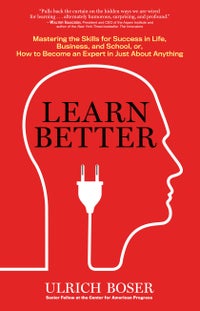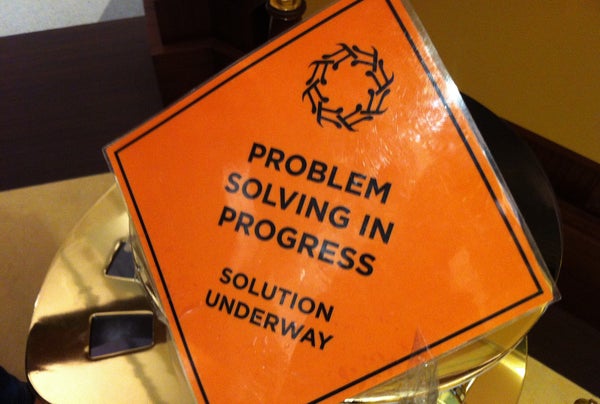This article was published in Scientific American’s former blog network and reflects the views of the author, not necessarily those of Scientific American
For Gurpreet Dhaliwal, just about every decision is a potential opportunity for effective problem solving. What route should he take into the office? Should Dhaliwal write his research paper today or next week? "We all do problem solving all day long," Dhaliwal told me.
An emergency medicine physician, Dhaliwal is one of the leaders in a field known as clinical reasoning, a type of applied problem solving. In recent years, Dhaliwal has mapped out a better way to solve thorny issues, and he believes that his problem solving approach can be applied to just about any field from knitting to chemistry.
For most of us, problem solving is one of those everyday activities that we do without much thought. But it turns out that many common approaches like brainstorming don’t have much research behind them. In contrast, practices that might seem a little odd—like talking to yourself—can be pretty effective.
On supporting science journalism
If you're enjoying this article, consider supporting our award-winning journalism by subscribing. By purchasing a subscription you are helping to ensure the future of impactful stories about the discoveries and ideas shaping our world today.
I came across the new research on problem solving as part of my reporting on a book on the science of learning, and it was mathematician George Polya who first established the field, detailing a four-step approach to cracking enduring riddles.

Credit: Ulrich Boser
For Polya, the first phase of problem solving is “understanding.” In this phase, people should look to find the core idea behind a problem. “You have to understand the problem,” Polya argued. “What is the unknown? What are the data?”
The second phase is “devising a plan,” in which people map out how they’d address the problem. “Find the connection between the data and the unknown,” Polya counseled.
The third phase of problem solving is “carrying out the plan.” This is a matter of doing—and vetting: “Can you prove that it is correct?”
The final phase for Polya is “looking back.” Or learning from the solution: People should "consolidate their knowledge.”
While Dhaliwal broadly follows this four-step method, he stresses that procedures are not enough. While a focused method is helpful, thorny issues don’t always fit nicely into categories.
This idea is clear in medicine. After all, symptoms rarely match up perfectly with an illness. Dizziness can be the signal of something serious—or a symptom of a lack of sleep. “What is tricky is to figure out what’s signal and what’s noise,” Dhaliwal told me.
In this regard, Dhaliwal argues that what’s at the heart of effective problem solving is making a robust connection between the problem and the solution. "Problem solving is part craft and part science, " Dhaliwal says, a type of "matching exercise. "
To get a sense of Dhaliwal’s approach, I once watched him solve a perplexing case. It was at a medical conference, and Dhaliwal stood at a dais as a fellow doctor explained the case: Basically, a man came into ER one day—let’s call him Andreas—and he spat up blood, could not breath very well, and had a slight fever.
At the start of the process, Dhaliwal recommends developing a one-sentence description of the problem. "It’s like a good Google search,” he said. “You want a concise summary,” and in this case, it was: Sixty-eight-year-old man with hemoptysis, or coughing up blood.
Dhaliwal also makes a few early generalizations, and he thought that Andreas might have a lung infection or an autoimmune problem. There wasn’t enough data to offer any sort of reliable conclusion, though, and really Dhaliwal was just gathering information.
Then came an x-ray, an HIV test, and as each bit of evidence rolled in, Dhaliwal detailed various scenarios, assembling the data in different ways. “To diagnosis, sometimes we are trying to lump, and sometimes trying to split,” he said.
Dhaliwal’s eyes flashed, for instance, when it became apparent that Andreas had worked in a fertilizer factory. It meant that Andreas was exposed to noxious chemicals, and for a while, it seemed like a toxic substance was at the root of Andreas’s illness.
Dhaliwal had a few strong pieces of evidence that supported the theory including some odd-looking red blood cells. But Dhaliwal wasn't comfortable with the level of proof. “I'm like an attorney presenting in a court of law,” Dhaliwal told me. “I want evidence.”
As the case progressed, Dhaliwal came across a new detail, and there was a growth in the heart. This shifted the diagnosis, knocking out the toxic chemical angle because it doesn't spark tumors.
Eventually, Dhaliwal uncovered a robust pattern, diagnosing Andreas with a cardiac angiosarcoma, or heart cancer. The pattern best explained the problem. “Diagnosing often comes down the ability to pull things together,” he said.
Dhaliwal doesn’t always get the right answer. But at the same time, it was clear that a more focused approach to problem solving can make a clear difference. If we’re more aware of how we approach an issue, we are better able to resolve the issue.
This idea explains why people who talk to themselves are more effective at problem solving. Self-queries—like is there enough evidence?—help us think through an issue.
As for Dhaliwal, he had yet another problem to solve after his diagnosis of Andreas: Should he take an Uber to the airport? Or should he grab a cab? After a little thought, Dhaliwal decided on an Uber. It was likely to be cheaper and equally comfortable. In other words, it was the solution that best matched the problem.
